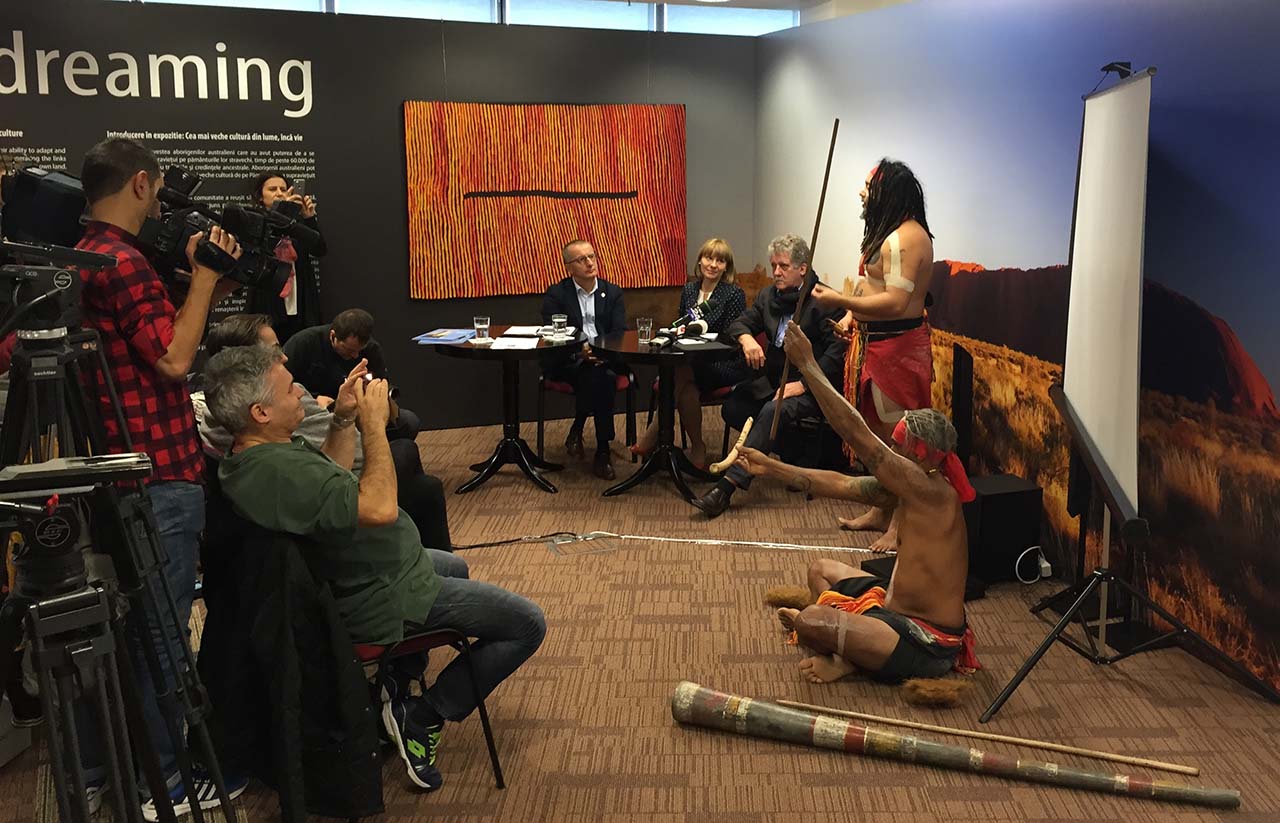Seeing Aboriginal Art For The First Time Thirty Years On

It is thirty years since I stood in a Perth gallery surrounded by people seeing Aboriginal art for the first time.
It was a strange feeling then, to be having that experience again three decades later. This time it was in a Romanian gallery just a few weeks ago. I was there with a major exhibition of Aboriginal work titled "The Dreaming" organised by Seeds Foundation.
The exhibition was in three sections. One was called Genesis, which was the traditional work that had its roots closest to where the contemporary art movement began those 30 years ago.
Then there was another section called Explosion, which covered more contemporary work, including Northern Queensland and some Western Desert work.
In one area of the exhibition were artworks related to rock art and sand painting and Tingari designs, all very much as things were 30 years ago.
Then in the later section were more recent works which were radically different. There was a lot of color, and there was ther use of expressive brushmarks and paint application.
In a way, the Romanian people were having a very different experience because they were seeing what we saw for the next 30 years all in one day. It was quite an experience for them and for me to be watching their response.
So what was different and what was the same? Both audiences said, "we've never seen anything like this." Both audiences were genuinely excited. Interestingly the most obvious difference were the mobile phones. Everywhere people were taking photos. They were keen to record this event, to share with others, to talk about it.
There was this suggestion that Aboriginal people had taken or opened this door of meaning, showing their culture to the contemporary Australian society. I think the Romanian people had two levels of response.
Firstly this was clearly an Australian art form reflecting our light and our space and that is so different for a European audience. Secondly they could see the parallels between an Aboriginal group reconnecting with modern Australia by showing their ancient values in contemporary painting and their own lost culture.
They ask themselves, "Okay, this is an extraordinary story from Australia. Does it have anything to do with us? Yes, maybe it does. We have embedded folkloric traditions, much of which could be nearly lost. Are there ways to bring these into the modern world that gives them new vitality, and new meaning, and still maintain some values that they have traditionally?"
I think there were many Romanians who will draw inspiration from this exhibition. They might feel that against impossible odds an ancient past can be reborn and celebrated.
Read more: New Survey Exhibition of Aboriginal Art Opens in Bucharest
